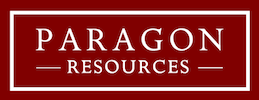by Sarah E. Dale and Krista S. Sheets
ROP=Return on People™


Here is the latest edition of our newsletter for financial professionals. Please feel free to share the content of this newsletter with anyone who can benefit from it. And, if there is anything that you would like for us to include in future newsletters, let us know! We base our newsletter content on your specific needs and what we hear from the field. To submit a topic that you’d like to see in upcoming newsletters, please email us at info@ParagonResources.com or info@knownobounds.net.
Transitioning Your Practice from Reactive to Proactive (Part 2 of 2)
Last month we shared with you the first five strategies for turning your chaotic, reactive work into more proactive, productive results. You can read those strategies on our website at: Transitioning Your Practice from Reactive to Proactive (Part 1 of 2). This month we offer five more proven practice management strategies to take back control of your business and find more enjoyment in your profession.
- Utilize blocking strategies to manage time
- Advisors should dedicate specific time slots for their highest and best use such as business development, decision making, client engagement, team leadership, and setting the vision for the practice. Support team members may need to block specific quiet time to execute complex tasks, work on projects, conduct client courtesy calls, participate in online training modules, or work on practice efficiencies.
- Blocks are typically 30 minutes to 2 hours. If the blocks are too short, you won’t accomplish your goal; however, if they are too long, you may become overwhelmed.
- Execute a time study twice a year to gain an understanding of exactly where your time is spent and uncover any time wasters.
- Resource: Practice Management Time & Task Management Resource Kit
- Train clients on expectations
- Understand the process that you use and when everything ideally occurs.
- Understand what is expected of THEM as a client of your business.
- Understand each team member’s role and purpose so that they know who to call for a specific need.
- Commit to ongoing growth
- Be resolute and intentional about blocking time every week to work ON the business as individuals and as a team.
- Make time to evaluate the performance of the team members and all aspects of the business itself.
- Avoid stagnation and status quo; seek new ways of doing things to increase efficiency.
- Ensure that all team members are evolving and expanding competencies and capabilities in order to serve client needs and enhance their skills.
- Resource: Our Team Performance Assessment and Business Performance Assessment are phenomenal resources to evaluate, identify performance barriers, and create a roadmap for future growth.
- Be selective
- Focus on an IDEAL client relationship definition…NOT MINIMUMS.
- Train COI’s on who you IDEALLY serve so that they will provide you with qualified introductions.
- Make sure that clients can articulate your points of distinction and the impact that your team has on their financial matters.
- Remain focused!
- Have a simple written plan or roadmap to help the team stay focused on WHAT is really important and WHO is really important.
- Avoid office politics and water cooler conversations.
- Avoid letting things fester; address conflicts or issues in a timely fashion.
- Execute consistent, open, and honest communication in all relationships.
- “Stuff happens”…let it go! Holding on to the past hinders your future. Forgive others; forgive yourself!
Most team members have multiple responsibilities and managing time is critical to efficiently executing tasks and meeting deadlines. Utilizing block time is an effective method to ensure that you have a balanced calendar that capitalizes on a precious resource – YOUR TIME. A balanced calendar is one in which the appropriate allocation of energy is given to the health and wellness of you AND your business without sacrifice.
Suggestions:
Proactively informing your clients of what they can expect when doing business with you can only drive your productivity and increase their appreciation of the value that you bring. Detailed communication must commence on day ONE of the relationship to minimize time spent reacting to client uncertainty and confusion. Top performing teams have well-informed clients who…
Ensuring that all team members dedicate a minimum of 10% of their time to working ON the business helps drive productivity and a commitment to excellence. Procrastinating or avoiding practice management decisions perpetuates the state of living in a reactive mode that typically stalls any possible revenue growth and causes a production plateau.
Suggestions:
You have earned the right of selectivity when it comes to the clients whom you choose to work with. Advisors who are controlled by their businesses are often considered in the community as “jacks of all trades, masters of none.” In order to take back control of a rollercoaster business, you must build your client base by design, not by default!
Suggestions:
It’s so easy to get fixated on activities that are necessary but that are outside of your control. Industry, compliance, and firm rules are examples of things that you have to accept. These items can become both a time drain and a source of negative energy for the team. Staying focused on dealing with only those decisions and actions that are within your power is a strategy to further drive proactivity.
Suggestions:
Organizing your team, your client base, your service deliverables, and your time will have a dramatic impact on minimizing reactive activities. It’s up to you to put an end to the chaotic. To err is human; to remain in error is stupid!

One thought on “Results-Driven Solutions: Transitioning Your Practice from Reactive to Proactive (Part 2 of 2)”
Comments are closed.